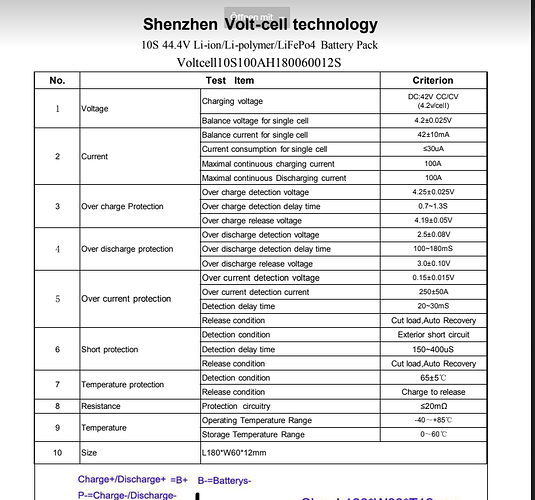Can you use a Boosted charger for a 10s battery? The nominal output for a Boosted charger is 42.24V 2A
For that one maybe, the og charger was 50v, you sure that yours isn’t?
I don’t have one on hand but I read it of somewhere online
If I find one that is 42.24V would it be safe to use?
The 42 and change charger should work though, .24v isn’t alot of overcharge. Just don’t let it sit like that for too long, you know the drill
I somehow lost my reply.
I would say that drift doesn’t look great, but it’s also not indicative of something like a cell failure.
You’re using an active balance charger already? Do they balance okay at full charge?
I swapped it for a new bms, that Baja sended to a friend of mine, before I picked it up four weeks ago. Now it runs on the new bms. The battery had a huge drift then.
The fact that this is a fairly new battery + you’re using an active balance charger is somewhat concerning.
Is the drift there every single time you discharge? And doing full discharge/charge cycles doesn’t lower the delta?
Feedback from APS on this subject is that brushless motors, by and large, are waterproof.
I will know it after the next ride or I’ll check the cells, because I charged it up now.
Do you think those comments were made in the context of sensorless motors, or do you think it applies to all brushless DC motors?
Does it go into a balance mode if you leave it plugged in at full?
I’m not familiar with the charger you’re using. It looks like it’s not doing a great job at the top off balance though.
I have it charged up with the normal charger, because I want to see the behavior from bms balancer. This charger in the pic is beefy. It does a great balance job.
Here the datasheet.(I charged it not with the hobby charger.)
43mA balancing current from the bms vs. the 1.2A from the hobby charger.
The iCharger has a balance only function and it can shot 40 amps in asynchronous and 70 synchronous mode.
to make things even clearer, I created this animation:
^you can see half the time (50% duty cycle), 60a current @ 50v is flowing from the battery, averaging to 30a @ 50v
the other half the time, the current flows inductively, and the motor “sees” 60a @ 25v the whole time. but in reality, during the “on times” the current in the motor might be increasing from 59.9a to 60.1a, and during the off times, the current is dropping from 60.1a back to 59.9a, which averages to 60a.
Im using a heatsink for my focboxes, but instead of just cooling the fets I was thinking about using a cooling pad like this on the lowered area (for the DRV and MCU)
What do you guys think
That really makes it clearer, thanks! And my head finally connected everything, thanks for everything, really great explanation!
Higher voltage can also mean an increase in efficiency. But the majority of your range comes from the # of cells in parallel, not the # in series.
I would expect a 10s4p to outperform a 6s4p in range if everything else was the same solely on efficiency. But it’s going to be a small increase in overall range difference.
so i finally came around to make a battery swap… its still the same behaviour 
does that narrow it down to the esc, or could for whatever reason a motor be faulty ?
like i said they both spin up, and with no load they spin and sound the same like the fully functional board
but under load, brakes and acceleration is still horrible



